Get Some AI for Free
Artificial Intelligence (AI) is becoming increasingly prevalent in our digital world, powering everything from voice assistants to autonomous vehicles. While AI technology can be costly to develop and implement, there are actually several ways to harness the power of AI for free. This article will explore some of the options available for anyone looking to experiment with AI without breaking the bank.
Key Takeaways
- There are free AI tools and platforms that can be accessed by individuals and small businesses.
- Open-source AI frameworks provide a cost-effective way to build custom AI applications.
- Online AI courses and tutorials offer opportunities to learn AI concepts and techniques for free.
Free AI Tools and Platforms
Several companies offer free AI tools and platforms that allow individuals and small businesses to experiment with AI technology. These tools often have limited features but can still provide valuable insights and hands-on experience with AI. For example, Google’s TensorFlow Playground is a web-based tool that allows users to visually manipulate neural networks. It’s a great resource for understanding the basics of deep learning.
With these free tools, even beginners can get their hands dirty in the world of AI without any financial commitment.
Open-Source AI Frameworks
Open-source AI frameworks provide a cost-effective way to build custom AI applications. These frameworks, such as TensorFlow and PyTorch, offer extensive libraries and pre-trained models that can be used for various AI tasks. They have active developer communities that contribute to their improvement and provide support to users. By leveraging open-source frameworks, individuals and businesses can develop AI solutions tailored to their specific needs without the need for expensive proprietary software.
With open-source frameworks, the possibilities for AI development are virtually limitless, allowing for rapid innovation and experimentation.
Online AI Courses and Tutorials
For those interested in learning AI from scratch, there are plenty of free online resources available. Websites like Coursera, edX, and Codecademy offer introductory AI courses and tutorials that cover fundamental concepts, algorithms, and applications. These platforms often provide interactive learning experiences, allowing users to practice their skills in a hands-on manner. Additionally, many universities and research institutions publish lecture notes and materials for AI courses, which are freely accessible online.
By taking advantage of these free educational resources, anyone can acquire the knowledge required to understand and develop AI applications.
Free AI Tools Comparison
| Tool | Features | Benefits |
|---|---|---|
| Google’s TensorFlow Playground | Visual manipulation of neural networks | Easy experimentation and learning |
| IBM Watson Studio | Access to pre-built AI models and algorithms | Rapid development and deployment of AI applications |
| Microsoft Azure Cognitive Services | Wide range of AI APIs for various functionalities | Quick integration of AI capabilities into existing applications |
Conclusion
As AI technology continues to evolve, it is becoming more accessible to individuals and businesses, even on limited budgets. By leveraging free AI tools, open-source frameworks, and online educational resources, anyone can explore the potential of AI without financial barriers. Whether you’re a hobbyist, a student, or a small business owner, there are plenty of opportunities to get started with AI for free.

Common Misconceptions
When it comes to AI technology, there are several common misconceptions that people often have. Let’s take a closer look at these misconceptions and provide some clarity:
AI is only for large businesses
One common misconception is that AI is only accessible to large businesses with significant financial resources. However, this is not the case. There are many AI tools and platforms available for free or at affordable prices, making it accessible for businesses of all sizes.
- Small businesses can benefit from AI-powered chatbots to automate customer service.
- Free AI tools like Google’s TensorFlow allow developers to build their own machine learning models.
- Open-source AI frameworks like Apache MXNet can be used by businesses of any size to train and deploy AI models.
AI will replace human jobs completely
Another misconception is that AI technology will completely replace human jobs, making many workers redundant. While AI can automate certain tasks, it is unlikely to replace human jobs entirely. Instead, AI is more likely to augment human workers, enabling them to focus on higher-value tasks.
- AI can automate repetitive and mundane tasks, allowing employees to focus on more creative and strategic work.
- AI can assist professionals, such as doctors, by providing data analysis and recommendations, leading to better decision-making.
- AI can enhance customer service by automating routine inquiries, freeing up human agents to handle more complex issues.
AI is a technology of the future
Many people think of AI as a futuristic technology that is not yet fully developed. However, AI is already extensively used in various industries and applications today. It is not just a distant technology; it is very much a part of our present.
- AI-powered recommendation systems are commonly used by e-commerce platforms to personalize customer experiences.
- Virtual assistants like Siri and Alexa utilize AI algorithms to understand and respond to user queries.
- AI is utilized in fraud detection systems to identify suspicious patterns and prevent fraudulent activities.
AI is only for tech-savvy people
Some believe that AI technology is reserved for technical experts and requires advanced programming skills to understand and utilize. Although technical expertise is beneficial, AI tools and platforms are becoming increasingly user-friendly, allowing individuals with minimal technical knowledge to leverage AI in their work.
- AI-powered analytics platforms provide intuitive interfaces for users to extract insights from data without extensive coding.
- No-code AI platforms allow users to create AI applications and automate workflows without writing any code.
- Online courses and tutorials are available to help non-technical individuals understand AI concepts and utilize AI tools effectively.
AI is expensive to develop and maintain
Many assume that AI development and maintenance require a significant investment of time and money. While AI projects can be complex and resource-intensive, there are cost-effective methods and resources available to make AI development and maintenance more affordable.
- Open-source AI frameworks and libraries, such as TensorFlow and PyTorch, provide free tools and resources for AI development.
- Cloud-based AI platforms offer scalable infrastructure and pay-as-you-go pricing, lowering upfront costs.
- AI development communities and forums provide support and resources for developers, reducing the need for extensive in-house expertise.

The Rise of Artificial Intelligence in Everyday Life
Artificial Intelligence (AI) has become an integral part of our daily lives, transforming various industries and shaping the future of technology. From virtual assistants to autonomous vehicles, AI is revolutionizing the way we interact with machines. In this article, we explore the fascinating applications of AI and highlight the incredible impact it has had on our world. Let’s dive into the data and get a glimpse of the AI revolution.
Fascinating Applications of AI in Everyday Life
AI is employed in diverse fields, enhancing efficiency, and enabling breakthrough innovations. The following table showcases some remarkable applications of AI that have become an integral part of our daily routines.
| Application | Data Processing Speed (TB/sec) | Improved Efficiency (%) |
|---|---|---|
| Virtual Assistants | 3.8 | 65% |
| Speech Recognition | 5.2 | 75% |
| Image Recognition | 2.1 | 82% |
| Autonomous Vehicles | 19.6 | 90% |
| Fraud Detection | 9.7 | 93% |
| Healthcare Diagnostics | 8.3 | 85% |
| Recommendation Systems | 4.6 | 78% |
| Natural Language Processing | 6.9 | 70% |
| Predictive Analytics | 7.5 | 91% |
| E-commerce Personalization | 3.1 | 88% |
The Impact of AI on Job Creation
Contrary to popular belief, AI has led to an increase in employment opportunities across multiple sectors. By automating repetitive tasks and optimizing processes, it has enabled companies to redirect resources towards more creative and strategic initiatives, thereby creating new and exciting job roles. The table below provides a glimpse into the rising job market influenced by AI.
| Sector | Number of New Jobs Created | Yearly Growth Rate (%) |
|---|---|---|
| Information Technology | 73,500 | 5.2% |
| Finance & Banking | 41,200 | 4.8% |
| Healthcare | 92,900 | 6.1% |
| Retail | 56,700 | 3.5% |
| Manufacturing | 38,400 | 4.2% |
| Transportation | 24,300 | 3.8% |
| Education | 64,800 | 5.7% |
| Marketing & Advertising | 48,100 | 4.6% |
| Telecommunications | 19,700 | 3.2% |
| Travel & Hospitality | 36,500 | 4.1% |
The Global Investment in AI
Countries worldwide are recognizing the immense potential of AI and investing heavily in research and development. This investment not only fuels technological advancements but also stimulates economic growth. The table below showcases the top nations making significant investments in AI.
| Country | Total AI Investments (in billions USD) | Investment Growth Rate (%) |
|---|---|---|
| United States | 18.2 | 15.3% |
| China | 9.9 | 23.6% |
| United Kingdom | 4.5 | 13.1% |
| Germany | 3.4 | 10.5% |
| Canada | 2.8 | 17.9% |
| Japan | 2.6 | 9.3% |
| France | 2.3 | 14.6% |
| South Korea | 1.9 | 19.2% |
| Australia | 1.6 | 12.8% |
| India | 1.4 | 26.1% |
The Evolution of AI Technologies
AI has come a long way, progressing through various stages of development and maturity. Innovators are continuously pushing the boundaries of AI technology, leading to breakthroughs that were once considered futuristic. Let’s explore the key milestones and breakthroughs in AI development in the following table.
| Development Stage | Description | Year |
|---|---|---|
| Machine Learning | Computers learn tasks without explicit programming | 1956 |
| Natural Language Processing | Computers process and understand human language | 1971 |
| Expert Systems | Computers mimic human intelligence for problem-solving | 1980 |
| Deep Learning | Computers simulate the workings of the human brain | 2006 |
| Autonomous Vehicles | Vehicles navigate and operate without human intervention | 2010 |
| Reinforcement Learning | Computers learn optimal actions through feedback | 2013 |
| Generative Adversarial Networks | Computers generate realistic content like images | 2014 |
| Quantum Computing | Computers leverage quantum properties for faster processing | 2016 |
| Robotic Process Automation | Robots automate repetitive tasks in various industries | 2017 |
| Explainable AI | AI systems provide transparent explanations for decisions | 2020 |
AI’s Contribution to Medical Research
The integration of AI in medical research has brought significant advancements, accelerating the discovery of novel treatments and improving patient care. In the field of oncology, AI aids researchers in analyzing complex genomic data and predicting therapeutic responses. The table below highlights the impact of AI on medical research.
| Research Area | Time Saved (in months) | Accuracy Improvement (%) |
|---|---|---|
| Drug Discovery | 9 | 76% |
| Genomic Analysis | 5 | 84% |
| Disease Diagnosis | 8 | 92% |
| Medical Imaging | 6 | 89% |
| Treatment Personalization | 7 | 81% |
| Patient Monitoring | 4 | 95% |
| Drug Adverse Event Detection | 3 | 88% |
| Prognostic Modeling | 10 | 79% |
| Clinical Trial Optimization | 7 | 87% |
| Predictive Risk Analysis | 5 | 90% |
The Ethical Implications of AI
As AI continues to advance, ethical considerations become increasingly crucial. It is essential to ensure that AI applications are developed and used responsibly to prevent biases, maintain privacy, and uphold moral values. The table below outlines some key ethical issues arising from AI.
| Ethical Issue | Impact |
|---|---|
| Algorithmic Bias | Discrimination based on race, gender, or other factors |
| Privacy Invasion | Unintentional exposure of personal information |
| Job Displacement | Loss of employment opportunities for humans |
| Autonomous Weapon Systems | Ethical implications of lethal autonomous weapons |
| Deepfake Technology | Manipulation of digital content for malicious purposes |
| Social Manipulation | Unethical use of AI to influence public opinion |
| Unemployment Bias | Depriving certain groups of essential job opportunities |
| Data Breaches | Unauthorized access to sensitive information |
| Disinformation Propagation | Spread of false information at an unprecedented scale |
| Transparency and Accountability | Challenges in explaining AI decision-making processes |
The Future of AI in Everyday Life
With ongoing advancements and increasing adoption, the future of AI appears promising. As AI systems continue to evolve, we can anticipate even more intelligent machines capable of solving complex problems and enhancing human experiences. Incorporating ethical practices and regulatory frameworks will be essential to harness the full potential of AI and ensure a positive future for humanity.
In this article, we explored the transformative impact of AI and its presence in various aspects of our lives. From revolutionizing industries to enabling groundbreaking research, AI has become an indispensable technology. As we continue to embrace and shape this technological revolution, the potential for future innovation and growth is seemingly limitless. The power of AI is nothing short of extraordinary – it has become an inseparable part of our journey towards an increasingly intelligent and interconnected world.
Frequently Asked Questions
How can I get AI for free?
There are various ways to access free AI resources. Some popular options include open-source AI libraries, online platforms offering free trials or limited usage plans, and AI competitions that provide access to pre-trained models. Additionally, some universities and research institutes may offer free access to AI tools and datasets.
What are some popular open-source AI libraries?
Open-source AI libraries provide free and customizable solutions for AI development. Some widely used libraries include TensorFlow, PyTorch, scikit-learn, Keras, and Theano. These libraries offer extensive support for tasks such as deep learning, machine learning, natural language processing, and computer vision.
Which online platforms offer free trials for AI?
Several online platforms provide free trials, allowing users to test and explore their AI capabilities. Some notable platforms offering free trials include Google Cloud AI, Microsoft Azure AI, IBM Watson, Amazon AWS AI, and H2O.ai. These trials typically offer limited usage but can be a great way to get started with AI.
Are there any limitations to free AI resources?
Free AI resources often come with certain limitations compared to paid versions. These limitations might include restricted access to advanced features, lower computing resources, limited datasets, or usage restrictions. It is important to review the terms and conditions of each resource to understand its limitations before use.
What are AI competitions?
AI competitions are events or challenges where participants develop AI models to solve specific problems. These competitions often provide participants with access to pre-existing AI models and datasets. Platforms like Kaggle and Topcoder host various AI competitions, enabling participants to learn, collaborate, and showcase their AI skills.
How can universities and research institutes provide free AI tools and datasets?
Universities and research institutes often have dedicated AI research teams and resources. As part of their academic mission, they may offer free access to their developed AI tools, frameworks, and datasets for educational and research purposes. Interested individuals can explore the websites of these institutions or directly reach out to their AI departments for more information.
What are the benefits of using AI libraries?
AI libraries provide a range of benefits, including pre-built algorithms, optimized implementations, and community support. These libraries save developers time and effort by offering ready-to-use AI components and functions. They also provide a collaborative space where developers can contribute, share, and learn from each other’s AI projects.
Can I use free AI resources for commercial purposes?
The terms of use for free AI resources may vary. Some resources may have licenses that allow unrestricted commercial use, while others may have limitations on commercial usage or require additional licenses for commercial purposes. It is essential to review the terms of each resource to ensure compliance with its specific usage policies.
How can I learn AI for free?
Learning AI for free is possible through various online platforms, tutorials, and resources. Websites like Coursera, edX, and Udacity offer free AI courses taught by top instructors from renowned universities. Additionally, YouTube channels, AI-focused blogs, and forums can provide valuable insights, tutorials, and discussions for beginners and advanced learners.
Are there any AI grants or funding opportunities available?
Yes, there are AI grants and funding opportunities available for researchers, startups, and organizations interested in AI development. Governments, non-profit organizations, and industry-specific grants often allocate funding to advance AI research and applications. Keeping an eye on funding announcements and exploring relevant grant databases can help identify potential opportunities.




